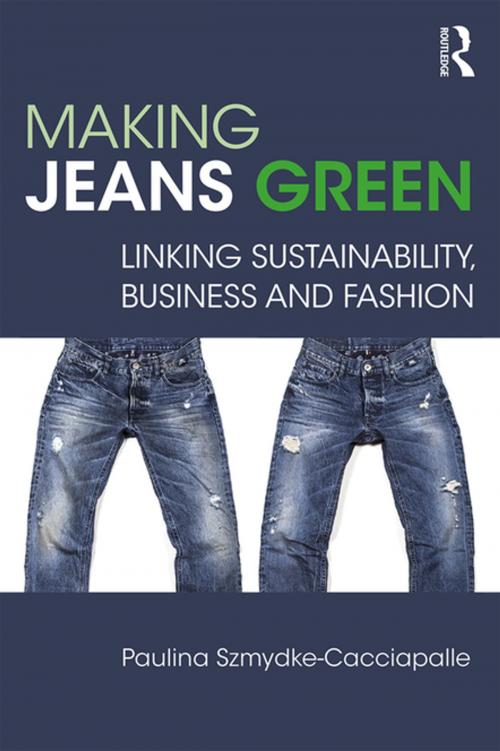Making Jeans Green
Linking Sustainability, Business and Fashion
Business & Finance, Economics, Sustainable Development, Nonfiction, Art & Architecture, General Art, Graphic Art & Design, General Design, Industries & Professions, Industries| Author: | Paulina Szmydke-Cacciapalle | ISBN: | 9781351200530 |
| Publisher: | Taylor and Francis | Publication: | May 20, 2018 |
| Imprint: | Routledge | Language: | English |
| Author: | Paulina Szmydke-Cacciapalle |
| ISBN: | 9781351200530 |
| Publisher: | Taylor and Francis |
| Publication: | May 20, 2018 |
| Imprint: | Routledge |
| Language: | English |
Consumers spend approximately $93 billion on denim products every year. This consumption comes at a great cost, with thousands of litres of fresh water, hazardous chemicals and energy contributing to just one pair of jeans, leaving the environment and the industry vulnerable to pollution and climate change.
Using facts, figures, case studies and anecdotes, this book investigates why the industry has been so slow to adopt green technologies and offers practical solutions to designers and fashion executives who want to switch to cleaner manufacturing, including those working in the ‘fast fashion’ sector. It also offers advice to the eco-conscious consumer who wants to purchase denim more sustainably. Considering the full lifecycle of a pair of jeans from the cotton crop to disposal, it presents examples of how to go green at different stages.
This book will be of great interest to fashion students and researchers, as well as designers, fashion executives, policy-makers and anyone who comes into contact with the world of denim.
Consumers spend approximately $93 billion on denim products every year. This consumption comes at a great cost, with thousands of litres of fresh water, hazardous chemicals and energy contributing to just one pair of jeans, leaving the environment and the industry vulnerable to pollution and climate change.
Using facts, figures, case studies and anecdotes, this book investigates why the industry has been so slow to adopt green technologies and offers practical solutions to designers and fashion executives who want to switch to cleaner manufacturing, including those working in the ‘fast fashion’ sector. It also offers advice to the eco-conscious consumer who wants to purchase denim more sustainably. Considering the full lifecycle of a pair of jeans from the cotton crop to disposal, it presents examples of how to go green at different stages.
This book will be of great interest to fashion students and researchers, as well as designers, fashion executives, policy-makers and anyone who comes into contact with the world of denim.















